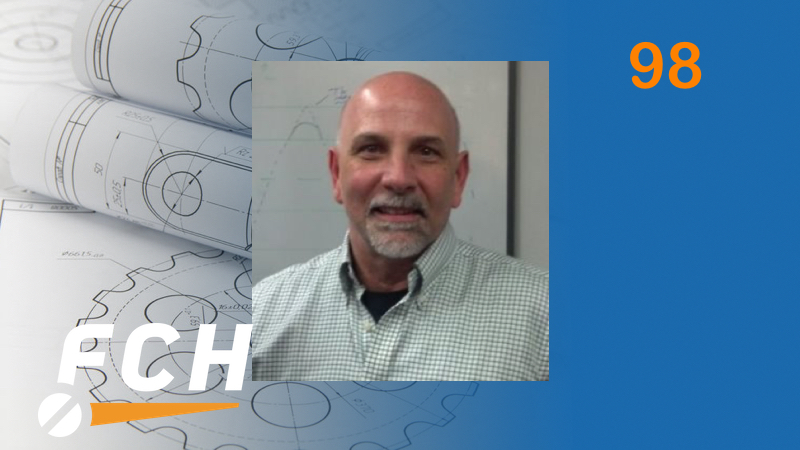This edition of the Fastener Training Minute with Carmen Vertullo was originally published October 29, 2015 as “another war Story about socket set screws” during episode 98 of Fully Threaded Radio.
Hi everybody, this is Carmen Vertullo with the Fastener Training Minute brought to you by the Fastener Training Institute and my little place out here in San Diego called Carver Consulting.
One of the things I do a lot of in my work is help people with drawings, that is blueprints for fasteners, specials, standard dealing with specifications, solid models, and computer aided design stuff. In one of the questions that isn’t phrased exactly this way but comes up often is “daddy where do drawings come from?” Well if you’ve ever wondered where drawings come from and how to make them, stick around. When I come back I’ll tell you what it takes to make a good professional looking drawing and how you can get one.
I’m going to give you a few pointers on how to get a professional drawing for a fastener. Now the question often arises where do drawings come from? Well, if one doesn’t already exist, usually you have a sample, somebody’s got a sample of a part and they say I need to have this made. So you send it out to a manufacturer, you call them up and they say give me a drawing. So now you have to work that out. If you have some in-house capability to make drawings. That’s great. You should work on it. If you don’t find someone that knows how to do it and it doesn’t just mean a person that has a computer or a CAD program. There’s more to a drawing then software just like there is more to writing than a word processor. Drawings involve drafting, engineering, manufacturing expertise, and a little bit of artistic creation to make the drawing look nice. You want a professional-looking drawing.
You should all have some kind of title block paper. Even if you are not in the drawing business. If you want to have a professional look that means that that piece of paper that’s got your name at the bottom of it with a bunch of other miscellaneous information. Things that are going to show up on the drawing are dimensions and tolerances, materials, standard fastener materials, non-standard fastener materials, special materials, you may have specifications, fastener and non-fastener specs on there. How do you call out threads properly? Surface finish, that is the roughness not necessarily the coating, can have a big impact on the cost. Platings and coatings, hydrogen embrittlement relief. Sometimes coatings are that are specific to fasteners should be used. You don’t want to call out the wrong plating spec. Testing requirements and inspection requirements for dimensional inspection, and how many parts we have to test or inspect. You might have a quality system requirement, a laboratory that needs to be qualified to test your part.
And who’s responsible for the design and any changes in the revisions? Revision levels are very important in the drawing world because it’s one of the places where we make the most number of mistakes. That creates scrap as we make the part to the wrong revision level. If there are customer part numbers involved, it’s very important that you have a good understanding with your customer about what you’re providing when you certify to their part number. You want to avoid using or at least properly use proprietary features and names for drives and thread forms and coatings and so on.
So where did drawings come from? Well, they come from an engineer or a design who person has the professional ability to put down on paper the idea that is either in your head or in the sample.
So if you have a chance, please consider attending the Fastener Training Institute webinar on how to do fastener drawings and where they come from and how to read them, which is coming up this month.
Thank you for listening. And this was Carmen Vertullo with the Fastener Training Minute.
